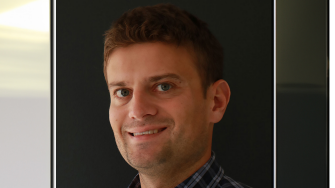Meet our WRC Researcher: Dr Bojan Tamburic
Science might tell us that there are up to 1,000,000 different types of algae in the world, but according to Dr Bojan Tamburic, they can be classified into two simple groups: good algae and bad algae.
Science might tell us that there are up to 1,000,000 different types of algae in the world, but according to Dr Bojan Tamburic, they can be classified into two simple groups: good algae and bad algae.

Good algae include species that we can use to make sustainable, low-carbon, good-for-the-environment products — biofuels, cosmetics, food and animal feed, colour pigments, clothes, pharmaceuticals and fertiliser, among others.
Bad algae, on the other hand? They wreak havoc in our waterways and water treatment facilities, and they also pose numerous risks to human and animal health.
“The big concern is that algae can produce some very dangerous toxins at concentrations that can kill people, kill livestock, kill pets,” says Dr Tamburic, the Deputy Director of the Water Research Centre and the UNSW lead for the Nuisance and Harmful Algae Science-Practice Partnership (NHASP).
“Even if they’re not producing harmful toxins, they can produce other ‘nuisance compounds’ — these are colours, smells and tastes that you really don’t want in your drinking water.”
These ‘bad algae’ are the current focus of Dr Tamburic’s research. As a recently appointed ARC Mid-Career Industry Fellow, Dr Tamburic is partnering with Melbourne Water to improve monitoring of the city’s stormwater system.
Using satellite imaging and other techniques, the research will investigate urban lakes and wetlands as prospective stormwater re-use sites and monitor their water quality for changes and impurities, including the early warning signs of algal blooms.
“If we actually want to re-use that stormwater for, for example, irrigation of parks or sports fields or even private gardens, we need to understand what the water quality is like,” he says.
“What we’re trying to do with this project is to give an early warning to say, ‘We’re seeing something from space, and we believe it might be a harmful algal bloom in this particular water body. It’s currently at this location — go out and sample it and see what’s really there’.”
The Fellowship project might be new, but Dr Tamburic is no stranger to the mysteries of algae. As a water quality engineer and the UNSW NHASP lead, he’s been working with and around algae since the early days of his research career.
During his PhD, he designed a reactor that can produce hydrogen fuel from algae. Since then, he’s worked on a wealth of industry projects with organisations like Melbourne Water, Sydney Water and Water Research Australia that are supporting evidence-based decision making in the algae management space.
This work matters not just because it seeks to address a water shortage that’s only set to worsen in the coming years, but because water management is key to achieving truly smart cities of the future.
“Once you have information on how well your wetlands are performing in terms of water quality, you can start to adjust various parameters to optimise water system performance,” Dr Tamburic says.
“In the future, if you want to set up infrastructure to re-use stormwater at scale, a large city like Sydney or Melbourne might need to monitor and manage 200 or 300 stormwater assets like sedimentation ponds and wetlands.
“If we can image all of them from space and show that the water quality in this one is currently much better than that one, it can help urban water utilities to make better decisions about how they manage their assets.”